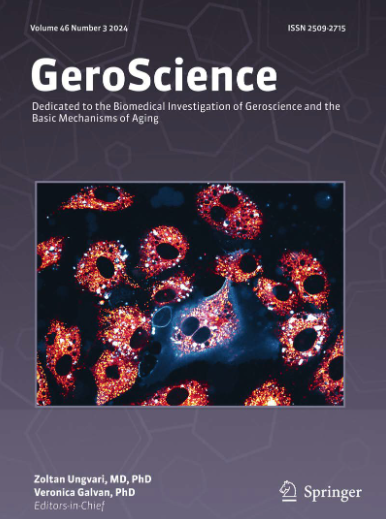Quantitative assessment of asymptomatic spinal cord compression using MRI: a multi-center study.
IF 5.4
2区 医学
Q1 GERIATRICS & GERONTOLOGY
引用次数: 0
Abstract
Aging is associated with an increased risk of neurodegenerative conditions, including degenerative cervical myelopathy (DCM), a leading cause of neurological disability in older adults. Asymptomatic spinal cord compression (ASCC) represents a potential precursor to DCM, characterized by spinal cord compression in individuals without overt clinical symptoms. Early identification and quantification of ASCC are critical for preventing age-related neurological decline. However, a standardized quantitative definition of ASCC remains lacking. This study aimed to develop a quantitative approach to assess cervical ASCC using high-resolution magnetic resonance imaging (MRI). T2-weighted 3 T spine MRI scans from 248 healthy controls (HCs), 53 ASCC individuals, and 55 DCM patients from three datasets conforming to the spine generic protocol were analyzed. An automated pipeline utilizing the Spinal Cord Toolbox was used to compute the maximum spinal cord compression (MSCC) metric at each slice, with peak MSCC serving as a quantitative metric for spinal cord compression. ASCC was identified in 17.6% of participants, predominantly at the C4-C6 spinal levels. While ASCC was observed in younger individuals (median age = 36 years), its prevalence increased with age. DCM patients were significantly older (median age = 54 years), exhibiting greater peak MSCC (22.4%) than ASCC individuals (13.8%). These findings suggest that spinal cord compression may begin in midlife and progress with aging, potentially contributing to age-related neurological impairments. This study validates an automated MRI-based approach for detecting and quantifying spinal cord compression, enabling large-scale analysis in aging populations. Given that ASCC is more common in older adults, longitudinal studies are necessary to determine its progression and potential conversion to symptomatic DCM. The proposed quantitative method may aid in early detection and monitoring of spinal cord compression, informing clinical decision-making to mitigate neurological decline in aging individuals.MRI对无症状脊髓压迫的定量评估:一项多中心研究。
衰老与神经退行性疾病的风险增加有关,包括退行性颈髓病(DCM),这是老年人神经功能障碍的主要原因。无症状性脊髓受压(ASCC)是DCM的潜在前兆,在没有明显临床症状的个体中表现为脊髓受压。早期识别和量化ASCC对于预防与年龄相关的神经功能衰退至关重要。然而,ASCC的标准化定量定义仍然缺乏。本研究旨在利用高分辨率磁共振成像(MRI)发展一种定量评估宫颈ASCC的方法。分析了248名健康对照(hc)、53名ASCC个体和55名DCM患者的t2加权3t脊柱MRI扫描结果,这些数据来自三个符合脊柱通用方案的数据集。利用脊髓工具箱的自动化管道计算每个切片的最大脊髓压缩(MSCC)度量,MSCC峰值作为脊髓压缩的定量度量。17.6%的参与者发现ASCC,主要发生在C4-C6脊柱水平。虽然ASCC见于较年轻的个体(中位年龄= 36岁),但其患病率随年龄增长而增加。DCM患者明显年龄较大(中位年龄= 54岁),MSCC峰值(22.4%)高于ASCC个体(13.8%)。这些发现表明,脊髓受压可能始于中年,并随着年龄的增长而发展,可能导致与年龄相关的神经损伤。这项研究验证了一种基于mri的自动检测和量化脊髓压迫的方法,使老年人能够进行大规模分析。鉴于ASCC在老年人中更为常见,有必要进行纵向研究以确定其进展和转化为症状性DCM的可能性。所提出的定量方法可能有助于早期发现和监测脊髓压迫,为临床决策提供信息,以减轻老年人的神经功能衰退。
本文章由计算机程序翻译,如有差异,请以英文原文为准。
求助全文
约1分钟内获得全文
求助全文
来源期刊

GeroScience
Medicine-Complementary and Alternative Medicine
CiteScore
10.50
自引率
5.40%
发文量
182
期刊介绍:
GeroScience is a bi-monthly, international, peer-reviewed journal that publishes articles related to research in the biology of aging and research on biomedical applications that impact aging. The scope of articles to be considered include evolutionary biology, biophysics, genetics, genomics, proteomics, molecular biology, cell biology, biochemistry, endocrinology, immunology, physiology, pharmacology, neuroscience, and psychology.
 求助内容:
求助内容: 应助结果提醒方式:
应助结果提醒方式:


